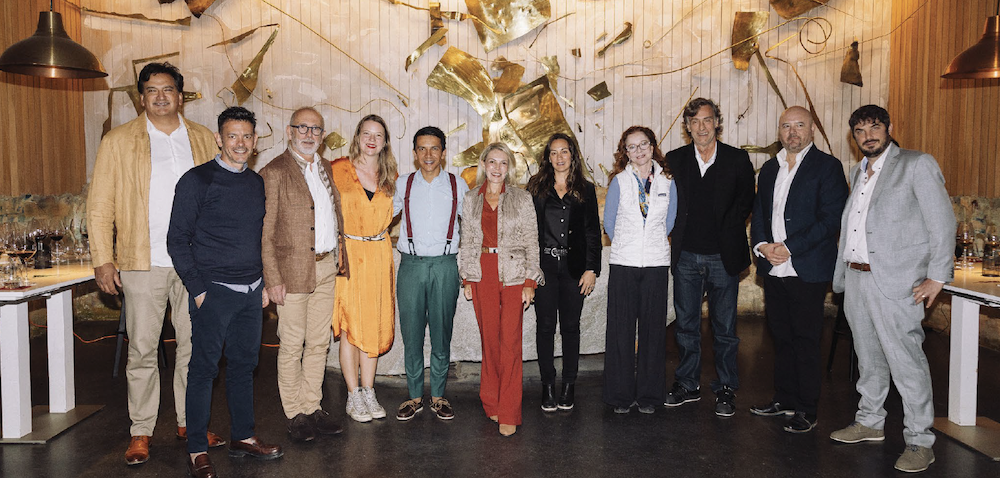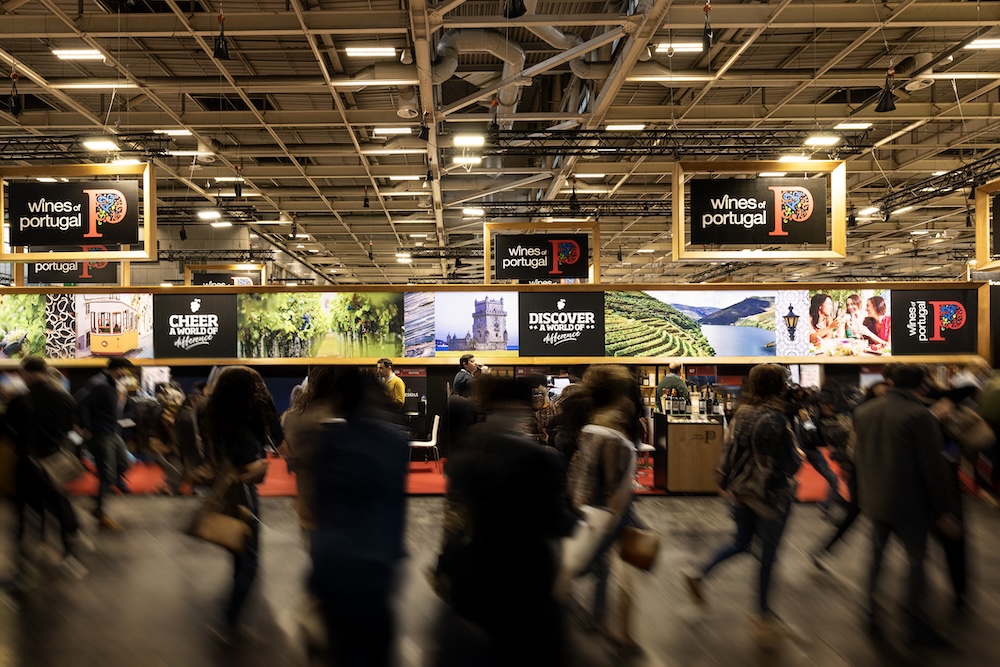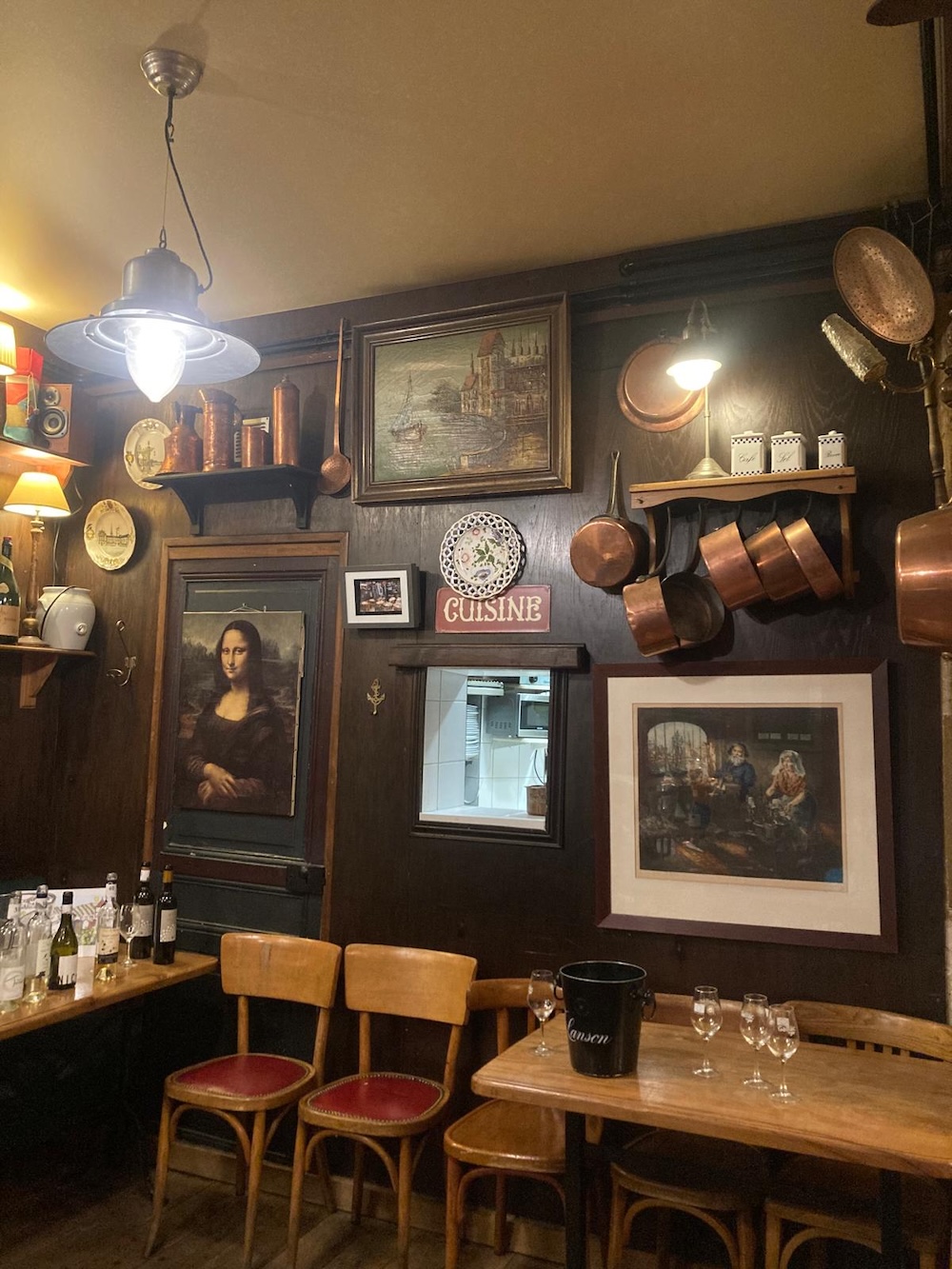
Discovery

Discovery
By Alain Echalier – Photographs: ©Claude Clin, posted on 21 November 2022
Are you really familiar with Bordeaux wines sporting the intriguing ‘Cru Bourgeois’ moniker on their labels? In an era of constant one-upmanship and an ocean of endorsements and superlatives, is this just one more marketing gimmick to catch the consumer’s eye, or is it genuinely meaningful? We went through the required specifications with a fine-tooth comb and quizzed the chairman of the Alliance along with various member chateaux. And here is our verdict!

Many Bordeaux vineyards were developed by ‘investors’ who often lived in the city. The ‘Crus Bourgeois’ designation – meaning wines belonging to town residents – is therefore a natural extension and a very ancient one at that. You might therefore think it was already synonymous with good taste and modernity even though, in French as in English, it can now also have a different connotation.
Within the world of wine, classifications have been around for centuries. In Bordeaux, one noteworthy example is the classification presented to the future US President Thomas Jefferson in 1787. More importantly, in 1855 Napoleon III asked French wine regions to classify their wines ahead of the ‘Exposition Universelle’. Bordeaux wine brokers responded with a list of just 61 Médoc red wines, a mere drop in the ocean compared to the region’s countless vineyards.
So in 1858, 248 other noteworthy ‘Crus Bourgeois’ were also listed. When the 61 chosen few from 1855 decided to drop the statement in favour of the highly gratifying ‘Grand Cru Classé’ status, the term continued to be used by the other category of wines.
Despite this, it is widely believed that it was not until 1932 that a serious classification of the wines was undertaken by Bordeaux wine brokers, followed by the creation of a Crus Bourgeois producers’ organisation in 1962. In 2003, a ministerial decree finally enshrined 247 chateaux from the 490 properties in the running, but the classification was rescinded in 2007. A new classification for the 2008 vintage featured 243 chateaux and since 2012, the selection process has been placed under the authority of INAO.
The classification is now reviewed every 5 years and only features red wines from the Médoc. The latest iteration is for 2020 and classifies properties for the 2018, 2019, 2020 and also 2021 and 2022 vintages.

The classification process is now organised by the Alliance des Crus Bourgeois. Only ‘chateaux’ vineyards in 8 appellations can compete: Médoc, Haut-Médoc, Listrac-Médoc, Moulis-en-Médoc, Margaux, Saint-Julien, Pauillac and Saint-Estèphe.
Firstly, the Crus are given an application to apply for one of three levels of classification: Cru Bourgeois, Cru Bourgeois Supérieur and Cru Bourgeois Exceptionnel. Compliance with the respective specifications is then checked.
Next comes the tasting stage, where several samples are tasted blind. Bureau Veritas is tasked with coordinating the tasting sessions and analysing the judges’ tasting abilities. The Crus Bourgeois only handle the judges’ training. Five vintages – from 8 to 4 years previous – are taken into consideration for a classification which can be displayed on the label for 5 years, from 2 years previous to 2 years ahead. So quality is not the only factor taken into account, consistency is important too.
Obviously Crus Bourgeois Supérieurs, and even more so Crus Bourgeois Exceptionnels require the highest tasting scores.
Subsequently, at least 2 of the 5 vintages used for the tasting are tested at random, just before the wines are bottled for each of the chateaux, in order to check that consumers will definitely be drinking the wines judged for the classification. In 2020, 250 Crus were selected, including 56 Crus Bourgeois Supérieurs and 14 Crus Bourgeois Exceptionnels. The wines represented 28 million bottles, or approximately 31% of Médoc wine production.
A sticker is placed on every bottle – sometimes on the neck or alternatively on the back label – featuring a QR code. Using a smartphone app that can be downloaded, consumers can check the authenticity of the wine. They are directed to the Crus Bourgeois website where information on the chosen wine is displayed, along with details about the chateau and the vineyard site, for instance.
Franck Bijon, chairman of the Alliance des Crus Bourgeois, points out the current trends and issues for Crus Bourgeois wines. The process, which is clearly and properly codified, is primarily aimed at creating healthy competition within the Crus Bourgeois category. This is essential because quality is a critical factor in an era where the consumer price tag ranges from 5 to 28 euros. Bordeaux has been particularly hard hit over the past 3 to 5 years. The pricing, often designed to ensure cash-flow over the short term, is not viable over the long term and for many is below actual cost price. People talk about “fair trade for chocolate”, but perhaps they should also take an interest in wine, quips Bijon. For now, the consumer has everything to gain. Bijon suggests a contest between a Cru Bourgeois and a fourth or fifth growth Grand Cru Classé (Ed. GCC have five different levels). The quality is there, for half the price.

The style of the wines is also changing. Judges have to take into consideration the wines’ ageing potential. Bijon, who also happens to be MD of Vignobles Larose and their former technical director, points out that current winemaking techniques produce wines that will keep for 7 to 15 years, but are also a pleasure to drink when younger. Cellaring capacity is no longer synonymous with austerity, as used to be the case in Bordeaux.
Reviewing the classification every 5 years also provides a great incentive to make quality wines. As a reminder, the classification for the Grands Crus Classés has been ‘cast in stone’ since 1855, when in actual fact, the vineyards used have on occasion changed significantly, through sales and acquisitions for instance. For the Crus Bourgeois, no more than 10% of the vineyards earmarked for the Cru can change and there must be a dedicated winery and ageing cellar. This provides consumers with a significant token of reliability.

And there is every likelihood that requirements will continue to increase. Although organic farming is not yet a prerequisite in production specifications, environmental considerations are gaining traction. From 2030, level 3 HVE certification will be required but the Crus Bourgeois team is also mulling taking on board other expectations expressed by society.

Karin Bernaleau is now the co-manager of the namesake vineyards. Her grandfather used to farm vines in the Margaux appellation area. But that was a different era – mixed farming was the norm on the farm which also bred calves…
The present-day vineyards are divided between two chateaux. Mongravey is situated in the Margaux appellation. It is a Cru Bourgeois Supérieur with 12 hectares under vine in 40 different blocks, 65% of which are planted with Cabernet-Sauvignon, 33% Merlot and 2% Cabernet Franc. De Braude is in the Haut-Médoc appellation area, and is the family chateau. It produces Cru Bourgeois wines grown over 8.5 hectares, 60% planted to Cabernet-Sauvignon and 40% Merlot.
Both Crus became Crus Bourgeois in 2003. Karin views the achievement as a way of securing recognition for 30 years’ hard work, but also positioning the wines for the consumer. The price of a bottle of Mongravey, depending on the vintage, ranges from 27 to 32 euros, as compared with 18 to 20 euros for De Braude.
Although the wines sold well before, entering the Crus Bourgeois category increased media exposure, an undeniable bonus when market conditions started to become more challenging. The Place de Bordeaux took greater interest in the wines, and exports were facilitated. Karin remembers one occasion when a visit from a Swiss journalist subsequently enabled her to open up the Swiss market.

The Alliance des Crus Bourgeois is a good resource for collaborative promotion of the wines. Levies allow them to take part in exhibitions like Vinexpo or to travel to China. The Cru Bourgeois sticker is effective for engaging with consumers and Karin makes sure to place it prominently on her bottles of wine. In Europe, and in China, Crus Bourgeois are well-received. In North America, however, efforts must be made to improve awareness.
The village of Cissac is home to a lovely, albeit unusual property. Château de Villambis belongs to an organisation whose purpose is to provide support for 120 people, some of whom are mentally disabled, and prepare them for life in the community. There are greenhouses for producing plants, a laundry, industrial sub-contracting work, and also production of wine from a large, unbroken, 14-hectare vineyard. The soils contain sand and Pyrenean gravel. Sabine Bemelmans, its marketing secretary, explains that although the wine was put forward for the classification starting in 1932, in all honesty, no wines were produced on the estate between 1950 and 1979. The first bottle re-emerged in 1982 and the chateau joined the classification in 2003. Belonging to the Crus Bourgeois category is an obvious source of pride and gratification for everyone who works here, and implies that their work is treated with respect.

The varietal range leans heavily in favour of Merlot (90%) with a little Cabernet-Sauvignon and 1% Petit Verdot. Its appellation is Haut-Médoc. The result is a supple wine with fine tannins, and an extremely appealing price tag of €8 for the second wine and €14-15 for the high-end offering. Most of the wines are sold to private customers, regulars, many of whom are the friends and families of those who work there. Don’t think for a moment, however, that people buy the wines simply for ‘charitable’ reasons – the Château also exports to China and occasionally the United States, as well as selling to wholesalers. Affiliation with the Crus Bourgeois rewards the quality of the wines.

Uni-Médoc, with its 140 member growers farming around one thousand hectares, is a sizeable co-operative winery representing 17-18% of Médoc wine production. Its director, Laurent Vaché, stresses that although the winery has had an eventful history since it was founded in 1934, the past decade or so has been relatively stable.
A co-operative winery is all about pooling resources. Uni-Médoc produces a complete range of wines, six of them classified as Crus Bourgeois, which equates to just under 10% of total production. In fact, its director is also the vice-chairman of the Alliance des Crus Bourgeois.

In reality, as Laurent Vaché points out, the winery is just like any other producer. “For our Crus Bourgeois wines, the vineyard blocks are clearly identified, as is the production process, and inventories are kept separate. We thus fully comply with production specifications. In fact, our member growers are well-versed in the concept of specifications, because we use them for all the co-operative’s wines. Subsequently, our wines go through the tasting process for the Crus Bourgeois. And last but not least, they are not necessarily our highest-end wines – we have other brands that can be more expensive!”
In the cellar door shop where the entire range is sold direct to consumers, the Crus Bourgeois are popular. Their prices range from €9 to 12. Uni-Médoc’s ethos revolves around supplying wines for pleasure that pair well with food. Some of them – like Château Clément – are exported to the United States and Germany.

Differentiating between Château / Cru Bourgeois / Co-operative Winery therefore no longer has currency, points out the winery’s director. The only things to remember are that a Cru Bourgeois is affordable, has a story to tell and offers quality, all of which is regulated and provides guarantees for consumers. Also, the wines have no specific target market – they can be equally sold to private customers directly, in supermarkets, Michelin-starred restaurants and wine merchants.

Before going any further, one thing should be pointed out – this pretty chateau is one of the Bordeaux properties bought by a Chinese buyer. In 2019, Hong-Kong-based company Micronasia took ownership of the estate, buying it from an equally foreign vendor, British industrialist Christopher Race. Bordeaux has indeed attracted global interest for a very long time. Wu Jianqi is the owner’s local representative and says that the same staff of three continues to work at the property. The estate boasts 15 hectares, 10.5 of them planted with vines – 50% Merlot, 40% Cabernet-Sauvignon and 10% Petit Verdot.

There are also 3,000 Sauvignon and Sémillon vines producing small amounts of white wine labelled Vin De France but, as Wu Jianqi hastens to add, “This is for the owner himself. He loves French wine and culture!”
Most of the wines produced are red, and have been classified as Cru Bourgeois since 2008. For consumers, 90% of whom are now located in China, this is an endorsement of quality. Situated in northern Médoc, not far from the estuary, the winery produces rounded, fruity wines, which are popular in China. Winemaking techniques have not changed, though, points out Wu Jianqi, and the wines are still matured for 12 months in barrels. The chateau also offers wine tourism solutions, with guestrooms and dining facilities. The focus is on moving upmarket, so next time the application will aim for Cru Bourgeois Supérieur status!

Paul Bordes, who has managed the estate since 2013, presents this superb property with its twenty or so hectares under vine, now in their second year of conversion to organic farming. The wines come under the Haut-Médoc appellation and are blended from Merlot and Cabernet-Sauvignon in proportions that vary every year, especially given the increasingly frequent extreme weather events.
The growth was previously a Cru Bourgeois and became a Cru Bourgeois Exceptionnel in 2020. Paul Bordes, who has connections with Bordeaux’s Right Bank, takes a very positive view of the classification. As with Saint-Emilion, he points to the fact that it is periodically reviewed, and that the spotlight is turned on the wine itself. He remembers how the vintages he put forward were tasted twice by 10 people, blind. The process was very well organised, all of which gives it legitimacy for consumers and should improve price points. It will also promote direct-to-consumer sales, even though most of the property’s wines are sold via Bordeaux merchants.

So far, he has not seen any major impact of the upgrade to Cru Bourgeois Exceptionnel internationally. The promotion did not entail any changes in production methods, however, because the winery already adheres to a strict policy of high-quality winemaking, and is mulling a switch to biodynamics, for instance. The delayed reaction, though, can easily be ascribed to Covid which put a damper on communications. The Alliance des Crus Bourgeois will be launching marketing campaigns and reputations are built up over time, and not overnight.
One Bordeaux broker marketed cases containing one bottle each of the 14 Crus Bourgeois Exceptionnels, which were immediately snapped up, underscoring increased interest in the category.

Inevitably, when it comes to Crus Bourgeois, we turn to Romain Roux with his typical South-West accent. As the owner of many vineyards, he has three Crus Bourgeois – Châteaux Plagnac, Puy Castera and Pontey. All three are from the Médoc and they sell respectively for around €6.5, €9.5 and €11.
Right off the bat, he explains that he views the Médoc as a region with a future. Ongoing climate change offers the guarantee of delicious wines, now that issues of ripening are a thing of the past. All of a sudden, even the simple Bordeaux wines are good, he says, with his customary banter. In fact, he rants about the industry’s defeatist attitude – admittedly, Bordeaux bashing is a reality, and there can be weather issues, but Bordeaux’s value for money proposition has never been so good.

Crus Bourgeois classification for the three wines is, he feels, a token of recognition. Although he is perhaps one of the Alliance’s largest owners, he has never taken an active role within the organisation because it is professional and works well. The levies are reasonable and the classification is recognised, in France, Asia and the United States – he has had first-hand experience of this at exhibitions in New York. So, every bottle he sells sports the sticker. Roux has never wanted to apply for Cru Supérieur or Exceptionnel status, despite the fact that his high-density vineyard Château Pontey is an absolute gem. The reason for this is that Cru Supérieur or Exceptionnel status entails wine tourism activities that he does not want to introduce – he grows wine and feels that everyone should stick to their own job.
Roux owns other properties in the Médoc, which do not feature in the classification. One is a Haut-Médoc, in the more affordable, classic range. The other is in Saint-Estèphe. Neither are in the same product line, it’s all about positioning.
The Crus Bourgeois institution is professional, peer-approved and offers a genuine guarantee for both its members and wine enthusiasts. But above and beyond this, the wine labels selected for the Cru Bourgeois classification now provide consumers with information that is easy to understand and practical, especially as they do their shopping, thanks to the QR code displayed on the bottles. The wine is authentic, tracked and has been tasted, enjoyed and approved. All of this takes away the stress for consumers at point of purchase, a crucial moment when they need to be reassured and comforted. And if that bottle also happens to display a Gilbert & Gaillard medal sticker, then you can rest assured that you are making the right choice!

Discovery

Discovery

Discovery